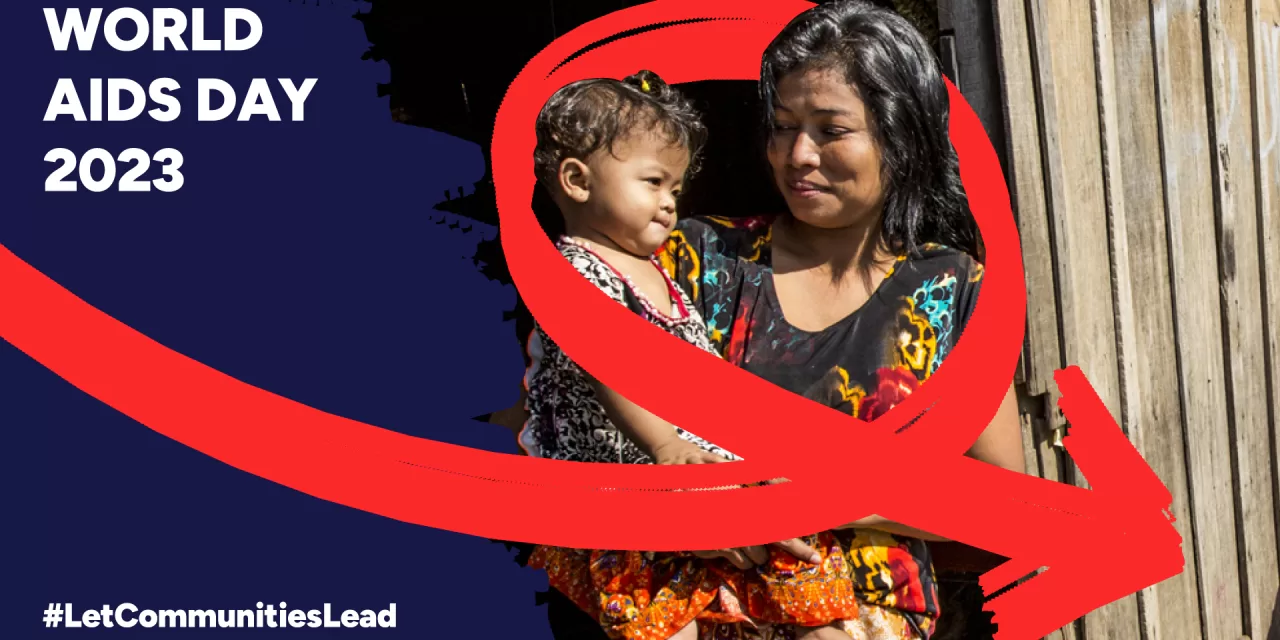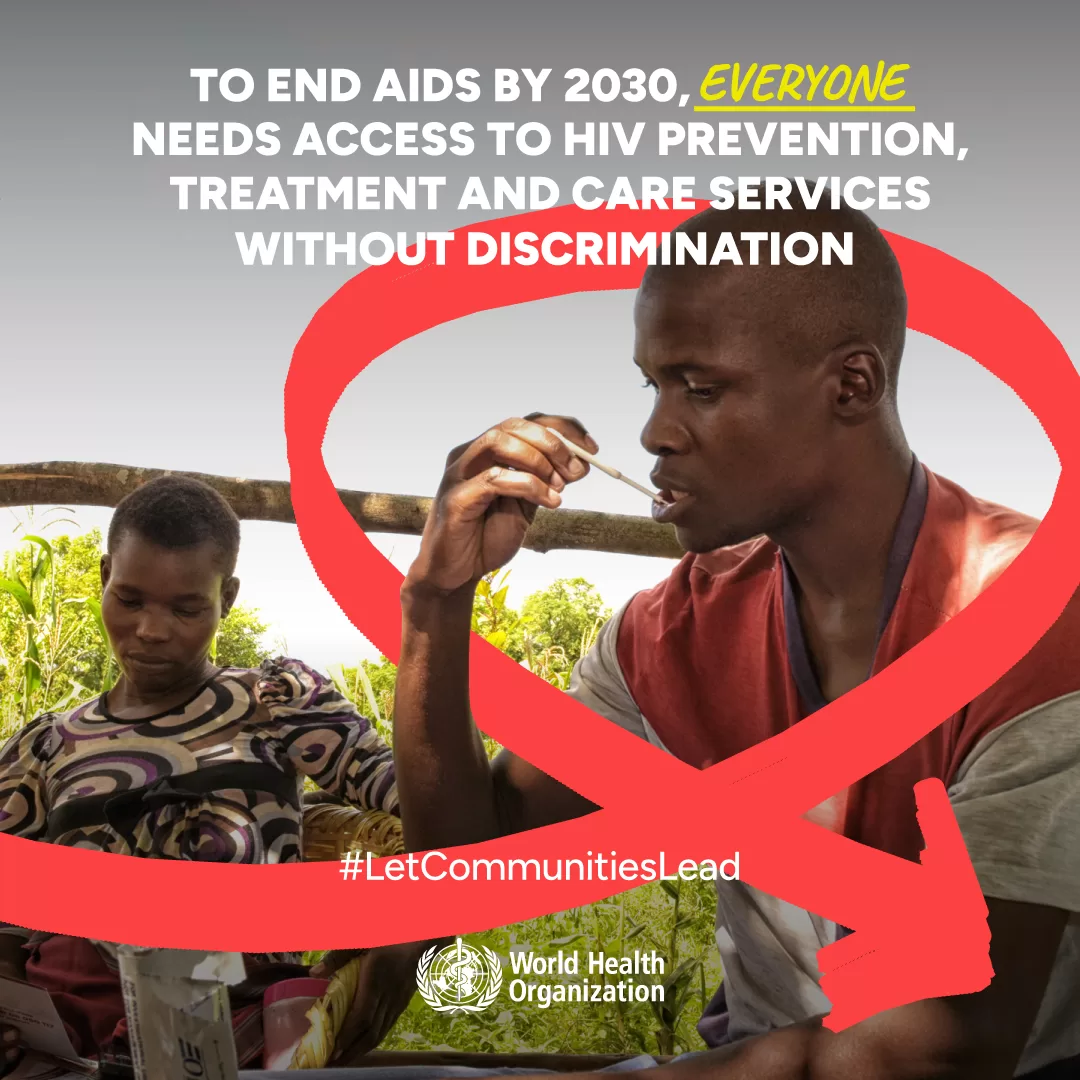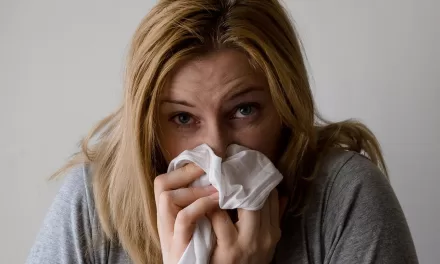World AIDS Day 2023
LET COMMUNITIES LEAD!
On 1st December, WHO, together with communities and partners will commemorate World AIDS Day 2023, under the theme “Let communities lead”.
Communities living with, and affected by, HIV, networks of people from key populations and youth leaders have been, and continue to be, essential for progress in the HIV response. They provide essential prevention, testing and treatment support services, build trust, generate innovative solutions, promote health, monitor the implementation of policies and programmes, and hold providers accountable.
The world can end AIDS with communities leading the way. That is why the theme for World AIDS Day this year is ‘Let communities lead’, and much more than a celebration of the achievements of communities, it is a call to action to enable and support communities in their leadership roles.
On World AIDS Day 2023, WHO celebrates and recognizes the invaluable contributions of communities in leading the response to HIV.
Key facts
- HIV remains a major global public health issue, having claimed 40.4 million [32.9–51.3 million] lives so far with ongoing transmission in all countries globally; with some countries reporting increasing trends in new infections when previously on the decline.
- There were an estimated 39.0 million [33.1–45.7 million] people living with HIV at the end of 2022, two thirds of whom (25.6 million) are in the WHO African Region.
- In 2022, 630 000 [480 000–880 000] people died from HIV-related causes and 1.3 million [1.0–1.7 million] people acquired HIV.
- There is no cure for HIV infection. However, with access to effective HIV prevention, diagnosis, treatment and care, including for opportunistic infections, HIV infection has become a manageable chronic health condition, enabling people living with HIV to lead long and healthy lives.
- WHO, the Global Fund and UNAIDS all have global HIV strategies that are aligned with the SDG target 3.3 of ending the HIV epidemic by 2030.
- By 2025, 95% of all people living with HIV (PLHIV) should have a diagnosis, 95% of those should be taking lifesaving antiretroviral treatment (ART) and 95% of PLHIV on treatment should achieve a suppressed viral load for the benefit of the person’s health and for reducing onward HIV transmission. In 2022, these percentages were 86(%) [73–>98%], 89(%) 75–>98%] and 93(%) [79–>98%], respectively.
- When considering all people living with HIV, 86% [73>–98%] knew their status, 76% [65–89%] were receiving antiretroviral therapy and 71% [60–83%] had suppressed viral loads.
Overview
Human immunodeficiency virus (HIV) is an infection that attacks the body’s immune system. Acquired immunodeficiency syndrome (AIDS) is the most advanced stage of the disease.
HIV targets the body’s white blood cells, weakening the immune system. This makes it easier to get sick with diseases like tuberculosis, infections and some cancers.
HIV is spread from the body fluids of an infected person, including blood, breast milk, semen and vaginal fluids. It is not spread by kisses, hugs or sharing food. It can also spread from a mother to her baby.
HIV can be treated and prevented with antiretroviral therapy (ART). Untreated HIV can progress to AIDS, often after many years.
WHO now defines Advanced HIV Disease (AHD) as CD4 cell count less than 200cells/mm3 or WHO stage 3 or 4 in adults and adolescents. All children with HIV younger than 5 years of age are considered to have advanced HIV disease.
Signs and symptoms
The symptoms of HIV vary depending on the stage of infection.
The disease spreads more easily in the first few months after a person is infected, but many are unaware of their status until the later stages. In the first few weeks after being infected people may not experience symptoms. Others may have an influenza-like illness including:
- fever
- headache
- rash
- sore throat.
The infection progressively weakens the immune system. This can cause other signs and symptoms:
- swollen lymph nodes
- weight loss
- fever
- diarrhoea
- cough.
Without treatment, people with HIV infection can also develop severe illnesses:
- tuberculosis (TB)
- cryptococcal meningitis
- severe bacterial infections
- cancers such as lymphomas and Kaposi’s sarcoma.
HIV causes other infections to get worse, such as hepatitis C, hepatitis B and mpox.
Transmission
HIV can be transmitted via the exchange of a variety of body fluids from people living with HIV, such as blood, breast milk, semen and vaginal secretions. HIV can also be transmitted during pregnancy and delivery to the child. People cannot become infected through ordinary day-to-day contact such as kissing, hugging, shaking hands, or sharing personal objects, food or water.
It is important to note that people with HIV who are taking ART and have an undetectable viral load do not transmit HIV to their sexual partners. Early access to ART and support to remain on treatment is therefore critical not only to improve the health of people with HIV but also to prevent HIV transmission.
Risk factors
Behaviours and conditions that put people at greater risk of contracting HIV include:
- having condomless anal or vaginal sex;
- having another sexually transmitted infection (STI) such as syphilis, herpes, chlamydia, gonorrhoea and bacterial vaginosis;
- engaging in harmful use of alcohol and drugs in the context of sexual behaviour;
- sharing contaminated needles, syringes and other injecting equipment and drug solutions when injecting drugs;
- receiving unsafe injections, blood transfusions and tissue transplantation, and medical procedures that involve unsterile cutting or piercing; and
- experiencing accidental needle stick injuries, including among health workers.
Diagnosis
HIV can be diagnosed through rapid diagnostic tests that provide same-day results. This greatly facilitates early diagnosis and linkage with treatment and prevention. People can also use HIV self-tests to test themselves. However, no single test can provide a full HIV positive diagnosis; confirmatory testing is required, conducted by a qualified and trained health or community worker at a community centre or clinic. HIV infection can be detected with great accuracy using WHO prequalified tests within a nationally approved testing strategy and algorithm.
Most widely used HIV diagnostic tests detect antibodies produced by the person as part of their immune response to fight HIV. In most cases, people develop antibodies to HIV within 28 days of infection. During this time, people are in the so-called window period when they have low levels of antibodies which cannot be detected by many rapid tests, but may transmit HIV to others. People who have had a recent high-risk exposure and test negative can have a further test after 28 days.
Following a positive diagnosis, people should be retested before they are enrolled in treatment and care to rule out any potential testing or reporting error. While testing for adolescents and adults has been made simple and efficient, this is not the case for babies born to HIV-positive mothers. For children less than 18 months of age, rapid antibody testing is not sufficient to identify HIV infection – virological testing must be provided as early as birth or at 6 weeks of age. New technologies are now available to perform this test at the point of care and enable same-day results, which will accelerate appropriate linkage with treatment and care.
Prevention
HIV is a preventable disease.
Reduce the risk of HIV infection by:
- using a male or female condom during sex
- being tested for HIV and sexually transmitted infections
- having a voluntary medical male circumcision
- using harm reduction services for people who inject and use drugs.
Doctors may suggest medicines and medical devices to help prevent HIV, including:
- antiretroviral drugs (ARVs), including oral PrEP and long acting products
- dapivirine vaginal rings
- injectable long acting cabotegravir.
ARVs can also be used to prevent mothers from passing HIV to their children.
People taking antiretroviral therapy (ART) and who have no evidence of virus in the blood will not pass HIV to their sexual partners. Access to testing and ART is an important part of preventing HIV.
Treatment
There is no cure for HIV infection. It is treated with antiretroviral drugs, which stop the virus from replicating in the body.
Current antiretroviral therapy (ART) does not cure HIV infection but allows a person’s immune system to get stronger. This helps them to fight other infections.
Currently, ART must be taken every day for the rest of a person’s life.
ART lowers the amount of the virus in a person’s body. This stops symptoms and allows people to live a full and healthy life. People living with HIV who are taking ART and who have no evidence of virus in the blood will not spread the virus to their sexual partners.
Pregnant women with HIV should have access to and take ART as soon as possible. This protects the health of the mother and will help prevent HIV from passing to the fetus before birth, or to the baby through breast milk.
Antiretroviral drugs given to people without HIV can prevent the disease.
When given before possible exposures to HIV it is called pre-exposure prophylaxis (PrEP) and when given after an exposure it is called post-exposure prophylaxis (PEP). People can use PrEP or PEP when the risk of contracting HIV is high; people should seek advice from a clinician when thinking about using PrEP or PEP.
Advanced HIV disease remains a persistent problem in the HIV response. WHO is supporting countries to implement the advanced HIV disease package of care to reduce illness and death. Newer HIV medicines and short course treatments for opportunistic infections like cryptococcal meningitis are being developed that may change the way people take ART and prevention medicines, including access to injectable formulations, in the future.
World AIDS Day 2023: calls to action
Health workers
- Advocate for access to essential HIV services;
- Incorporate HIV into routine health interventions;
- Deliver care that is kind, respectful of human rights and without stigma.
Ministries of Health, National AIDS Commissions and other public health leaders
- Allocate sufficient resources improve the quality of HIV services and make them more resilient and sustainable;
- Focus efforts to reach populations that are vulnerable or that are key to the HIV response, including, children, men who have sex with men, transgender people, people who use drugs, sex workers, and prisoners;
- Expand high quality HIV services for youth at risk, adolescents, pregnant women, men who have sex with men in a flexible and sustainable manner;
- Empower communities to combat stigma and discrimination.
- Support and empower frontline health workers (nurses, midwives and community health workers) to deliver high-quality HIV services, while recognizing their critical contributions in providing HIV services;
- Ensure appropriate and sufficient personal protective equipment and hand hygiene items, as well as the provision of a supportive, safe working environment to improve the safety of working conditions in health care settings.
Civil society
- Help to reach vulnerable, stigmatized and other difficult-to-reach populations;
- Speak out against stigma and discrimination;
- Help young people take leadership in the AIDS response so that services meet their needs.
Community leaders
- Ensure essential HIV services are maintained in the community;
- Reach out to key and vulnerable populations and assist them to access HIV services when needed;
- Ensure that adolescents, youth at risk, pregnant women and infants receive adequate care that incorporates HIV;
- Combat stigma and discrimination to ensure that everyone feels safe to access HIV services;
- Support health workers to provide HIV services to everyone in the community.
HIV program managers
- Focus on key and vulnerable populations for delivery of HIV services.
- Support and empower health workers to deliver high quality HIV services to everyone who needs them;
- Ensure adequate training in HIV services for health workers.














